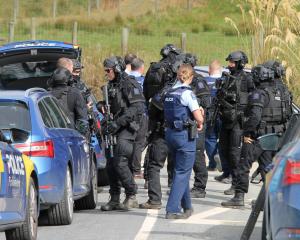
While his message was "we have listened", the subtext was "I have made a decision".
Whether you liked Mr Brown’s decision or not — and, with the alarming lack of detail being provided by Health New Zealand Te Whatu Ora in the days subsequent, suspicion is the decision could become less and less likeable — it does a new minister in a tricky portfolio no harm at all to come straight out of the gate with an announcement which would be widely perceived as positive.
Was it all Mr Brown’s doing? Well, no, it would have been a collective decision taken by the Cabinet, and most of the groundwork was undertaken on the previous minister’s watch.
The cabinet paper outlining the options the executive considered will make fascinating reading.
What that document will not capture though is the discussion on the report, given that cabinet debates are meant to be confidential so as to preserve the concept of cabinet collective responsibility for decisions.

Anything which smacked of adding more to the appropriation for the new hospital would have been looked at askance by her, let alone by Prime Minister Christopher Luxon, who, while he normally rounds up to $1.9b, has been repeatedly adamant in his public comments that this will be the final cost.
One would also imagine that the financial hawks of Act New Zealand would have been strongly against further waste.
Southern Say understands that New Zealand First leader Winston Peters’ voice was a crucial one in getting the proposal to build the new Dunedin hospital inpatients building on the Cadbury site across the line.
Mr Peters was adamant pre-election that the new hospital build had his full support, telling a Dunedin audience that the project should not be "nickel and dimed" — a phrase he has used several times since to oppose proposed cuts to the hospital.
While it did not make the final coalition agreement, that did not mean that it was unimportant for NZF.
This type of stuff is bread and butter politics for New Zealand First: it is regional development, it is about looking after New Zealanders’ health and wellbeing and — being blunt about it — the demographic which largely makes up NZF’s constituency is the generation which has the greatest need for comprehensive and excellent health and hospital services.
While Mr Peters has not said much about the hospital decision as yet — he has had many more than a few controversies to deal with in recent days — one would imagine that he will claim some credit, and seemingly rightly so, when he is next in Dunedin.
That might be in the very near future. Mr Peters was meant to come to town last October to officially open the KiwiRail Hillside workshop but that was scuppered by the torrential downpour and associated flooding which drenched Dunedin and Otago that day.
Also cancelled that Friday had been the South’s day in the "sun" for the series of regional economic forums organised by Regional Development Minister Shane Jones.
Southern Say understands both are back on the calendar and pencilled in for March.
By that time Mr Peters may be in a position to say something further about another critical issue to this part of New Zealand, the interisland ferry. Quite apart from its importance in moving southern people and goods about the place, the workstream anticipated to be handled by Hillside — a project championed by NZF when it was in government with Labour — is somewhat predicated on a rail-capable ferry service being maintained.
This week Mr Peters announced a "world-wide market engagement" to buy two medium-sized ferries, with a delivery date of 2029. He said no time was to be wasted in getting a build started as soon as possible and the tender for the project closes at the end of this month.
Woolly thinking
Closer to home, a big win last week for Taieri New Zealand First list MP Mark Patterson in his ongoing campaign to save the wool production industry.
One thing that was in the National-NZF coalition agreement was to direct government agencies, where practical and appropriate, to preference the use of woollen fibres rather than artificial fibres in government buildings.
That noble endeavour looked like falling at the first hurdle when it emerged that state housing provider Kainga Ora, New Zealand’s biggest landlord, had specifically excluded woollen carpets from the scope of a 2024 tender to provide it with carpets.
Now this was purely an operational decision, and convention is that ministers to not interfere with operational decisions, but it would be fair to say that NZF ministers in general, and Mr Patterson in particular, were not best pleased when news of the tender criteria got out.
Housing is the province of senior National MP Chris Bishop, and after a conversation on the issue out came a press release announcing that the tender would be reopened to allow wool carpet manufacturers to bid.
Mr Bishop was, apparently, "disappointed" to see woollen carpets ruled out unequivocally, and it does not take rocket science to figure out that "disappointed" equates to a higher level of dudgeon than that.
Of course, being able to tender does not equate to actually winning a tender, but you cannot win a race if you are not even invited to come to the starting line.
Mr Patterson will not save wool with this alone, but at least he can show he is trying his darndest to do so.












